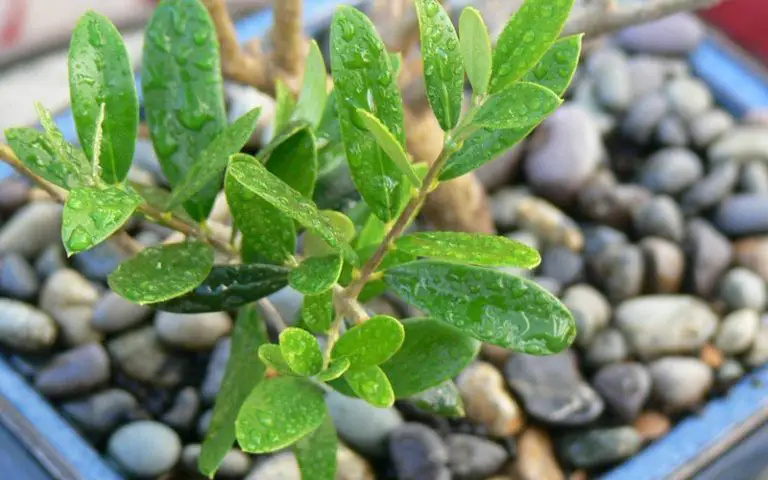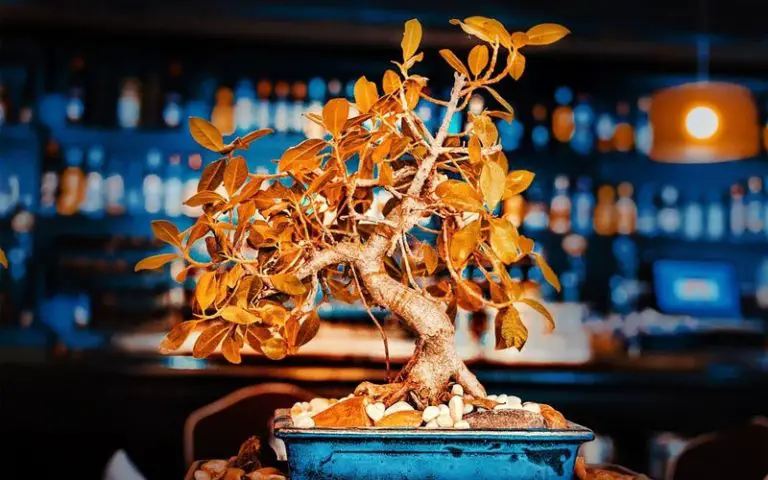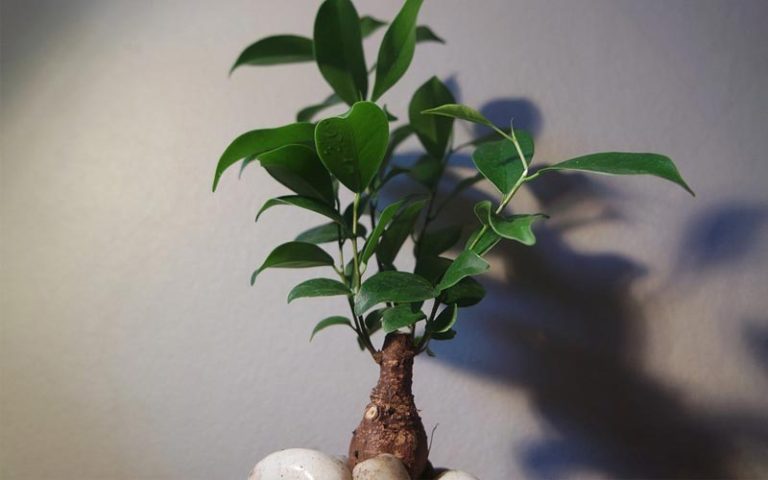The Clip and Grow Bonsai Technique - How Does it Work?

The clip and grow bonsai technique has been used for centuries as a natural way to train and style your bonsai. Although using wire is a very popular method of training bonsai, there are specific bonsai trainings that believe in nature trees are not shaped by wire, and as such, they prefer using the more natural cut and develop method. An example of such training is Lingnan Penjing bonsai artists who only use this method to train their trees.
Some species of trees can’t be wired, so knowing the basics of the bonsai cut and develop method is worthwhile if you plan on extending your bonsai collection to various species of trees.
What Tools Are Needed for the Clip and Grow Bonsai Technique?
There are a few tools needed that will make the clip and grow method easier to achieve. However, people can effectively use the cut and develop approach with only the bare essentials, pruning shears, and a few other items. Using the right tools will also ensure the health of your tree as mistakes are lessened.
Let’s take a look at the best tools you can get for the clip and grow bonsai technique.
Tool
Uses
Benefits
Pruning shears
Used for cutting twigs, smaller branches, leaves, and even roots.
This is one of the most basic tools that any bonsai enthusiast should own. They are sharp shears ideal for many different uses. They are usually smaller than regular gardening shears making them ideal to use on bonsai.
Concave branch cutters
Used for cutting branches.
Concave cutters are able to cut the branches with a deepend cut that will heal over without leaving a bulbous scar.
Root rake
Used to detangle and comb out roots during repotting.
Combing out your roots in a radial fashion will ensure an equal distribution of nutrients and healthy root development.
Cut Paste
Used to apply on areas where you’ve made a large cut.
Applying cut paste to large cuts prevents the sap from bleeding out and also helps the tree heal and controls how the scar tissue forms.
There are many different bonsai tools available. The above list is just the basics needed for the cut and develop method.

Our Top 3 Bonsais for Clip and Grow Technique
There are certain species of trees that lend themselves exceptionally well to the bonsai clip and grow technique. Let’s take a look at three of the best species for this method and their characteristics.
Elms
Elms are popular trees as bonsai, with the top one being the Chinese Elm. These trees are relatively easy to train as bonsai as they develop fine branch ramification with small leaves. The notable characteristics of elms are their thick trunk development and lovely textured leaves.
Fukien Tea Trees
The Fukien Tea Tree is a tropical evergreen shrub that sports lovely tiny white flowers year-round. The flower eventually gives way to small red, green, or blackberries. This shrub makes an excellent bonsai as it can stay relatively small, the leaves are also already small, and it can develop a nice thick, knotted trunk more quickly.
Hornbeams
Hornbeams are naturally well suited as bonsai, with the Japanese, European, and American varieties being very popular. They are deciduous trees that sport very attractive autumn colors. Naturally, their leaves are on the smaller side, and the bark can start to appear old and gnarled in a shorter amount of time than most trees.
What Is the Clip and Grow Bonsai Training Technique?
The cut and develop method was the original basic technique of training bonsai before wiring was used. This training method depends heavily on pruning to style and train the tree. Although that seems simple enough, you do need to understand pruning and ramification to use this technique successfully.
There are a few bonsai schools and even bonsai enthusiasts to this day who prefer only to use clip and grow bonsai techniques as it’s a more natural approach to training and styling your tree.
Very basically put the cut and develop technique is exactly as the name suggests. You let the branches grow out long and then cut back to the desired length, usually just before two buds and where wood has already formed in the branch or stem.
New growth will then sprout from the buds in a new direction. Once again, leave the new growth to grow out and nice and long, giving enough time for the wood to form in the stems before cutting back again.
Using the bonsai clip and grow technique allows the tree to guide you in the style and design and let nature take its course. In the end, you’ll have a beautifully natural styled bonsai with great taper, texture, and thick trunk.

How to Do the Clip and Grow Training Technique?
In order to use the cut and develop method effectively, you need to understand pruning and ramification. Pruning is the removal of trunks, stems, leaves, or roots that you don’t need in the final design of your bonsai. Ramification is the healthy branching of the tree.
Healthy branches will split from one into two and then into four and then eight and so on, with the leaves growing from the smallest branches. Ramification is vital in bonsai as it means you have a healthy tree, and it also makes the tree appear much older and balanced.
Step 1: Let the Branches Grow
When training a bonsai, you may often become tempted to trim back any growth as soon as it becomes apparent. With this technique, you’ll need to hold yourself back and allow the branch to grow longer than you expect. Allowing the branches to grow will help thicken the branches and give time for the wood to form in the branches. This is a critical part of the cut and develop method.
Step 2: Inspect Branches for Signs of Wood Growth
As your branches become longer and reach a thickness that you’re happy with and that creates a good taper with the tree trunk, inspect your branches for signs that wood has formed. This would be easy to spot as new growth (found at the tips of branches) are green and much more pliable. Areas where wood has formed usually starts browning and will be more rigid and less flexible.
Step 3: Clip Back the Branches
Once you’ve established that there’s wood growth in the branches and that the wood growth extends past the two buds you want to prune to, you can go ahead and make the cut above the buds you want new branches to develop from.
Step 4: Prune Away Branches Where Three or More Shoots Develop from the Same Buds
In some cases, you’ll see that three or more shoots appear from the buds. Trim these back so that only two remain. It’s a good idea to keep the two most vigorous and developed shoots growing in your desired direction.

Advantages of the Clip and Grow Technique
As with any training technique, there are benefits and disadvantages to each method. Let’s look at some of the advantages of the clip and grow technique.
Natural
This method is a more natural training technique than using wire. By using this technique, you ensure that your finished result will be a beautifully natural-looking tree.
Creates Nice Angular Lines
This technique is also suitable for creating strong angular lines. This is good when you want a more masculine bonsai. It also creates a nice taper that is well balanced.
Easier
This is a much easier method, and once you understand the basics of pruning and ramification can be very hard to mess up. The same cannot be said for wiring, which requires more work, attention and care.
Disadvantages of the Clip and Grow Technique
There are also a few disadvantages of the clip and grow technique. Let’s look at a few of those downsides now.
Takes Longer
Training a bonsai with the cut and develop technique takes longer than using wires. You have to constantly wait for the branches and stems to grow out and then cut them back and repeat the process.
Needs an Understanding of Pruning and Ramification
With this method, you also need a basic understanding of pruning, how pruning works and how to prune to produce new growth. You also require some knowledge of ramifications and how to create new stems and grow them into branches.

Final Thoughts
The bonsai clip and grow technique is a beneficial technique for creating natural styles in your tree. This technique creates a beautiful flow with a natural taper and good ramifications, which is pleasing to the eye. Not all trees can be wired, so understanding how to use the cut and develop method will allow you to work with a wider variety of tree species within the hobby.
Patience is required, as it can take many years to train your tree with this method properly. However, the finished result will be a very rewarding bonsai and a star in your collection.
FAQ
As an easy reference, we’ve compiled a list of frequently asked questions. If you have any questions that haven’t been answered by our article or the below questions, please let us know.
The clip and grow method is a training technique used to style bonsai. In this method, you allow branches to grow very long before cutting back to a bud to allow new branches to develop into a new direction.
Yes, you absolutely can. After all, when bonsai was first practiced, the artists did not use wires but relied on pruning to train their trees.
The tree will continue to grow naturally in the way it might’ve grown in the wild. You can help style this natural shape by selective pruning or using the cut and grow method.
This technique is best started as soon as possible for the best results.
This technique works very well on Elms, Fukien Tea Trees, Hornbeams, and other shrubs.
This technique can take many years as you have to wait for the branches to grow out before pruning them back. In some cases, you can wait multiple years before pruning back a branch. This technique, similar to the art of bonsai, requires patience.







